See How Wabi-Sabi Can Bring Harmony and Beauty to Your Home
I discovered wabi-sabi more than a decade ago, via a woman in Maine who was living my dream. Kate NaDeau lives in a hand-built stone house atop a hillside brimming with herbs and flowers, flea-market furniture and dumpster finds.
When Kate described her home as wabi-sabi, I pressed her to explain the concept, which was foreign to me. She described it as the Japanese art of appreciating things that are imperfect, primitive and incomplete. She sent me home with a slim volume, Wabi-Sabi for Artists, Designers, Poets & Philosophers, by Leonard Koren (one of the best gifts I’ve ever received).
Before I read Koren’s book, I knew I’d found myself in this ancient Japanese practice of revering gracefully weathered, rusty things. Finally, there was a word I could use when my mother asked when I planned to paint the old wooden French doors in my dining room and why I worked on a 1940s enamel table. I delved deeper and learned that decor is just one facet of a philosophy that promotes attention, reverence, generosity and respect. In any culture, these are a happy home's foundations.
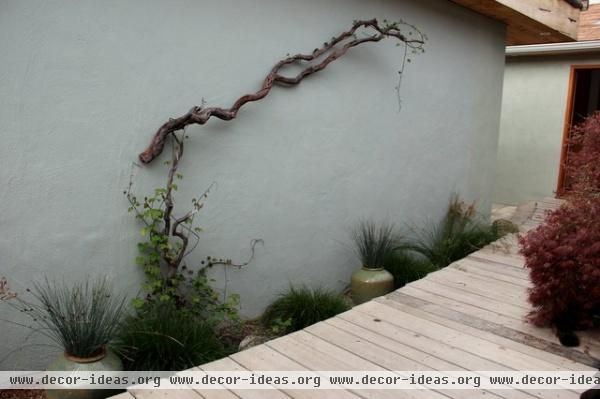
Wabi stems from the root wa, which means harmony, peace, tranquility and balance. In early Japanese poetry, wabi meant sad, desolate and lonely, but also humble by choice and in tune with nature — like this simple garden sculpture.
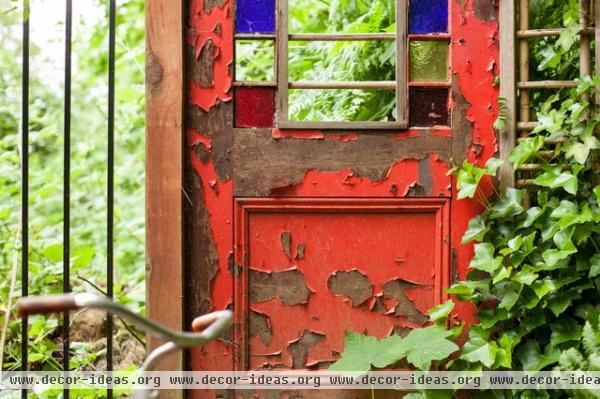
Sabi means “the bloom of time.” It connotes natural progression — tarnish, hoariness, rust — the extinguished gloss of what once sparkled. Like this door, sabi things carry their years’ burdens with dignity and grace, becoming more interesting and beautiful than they were before.
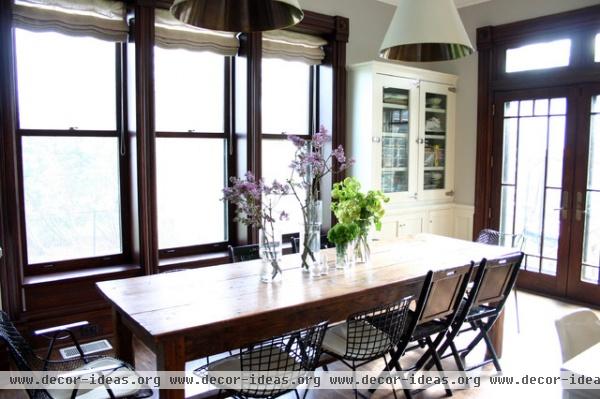
Wabi-sabi isn’t French country or shabby chic. It's more of an attitude than a style. Intimately tied to Zen Buddhism and the Japanese Way of Tea, it presents home as sanctuary, simple and without clutter or distraction. This kitchen's double-hung windows and camp-like air give it a clean, modern wabi-sabi look and feel.
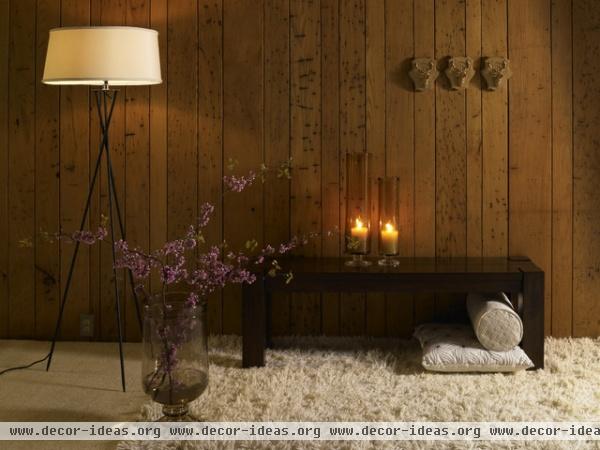
Wabi-sabi interiors are muted, dimly lit and shadowy, giving the rooms an enveloping, womb-like feeling with natural materials that are vulnerable to weathering, warping, shrinking, cracking and peeling. Uncluttered yet not overtly austere, wabi-sabi rooms are, above all, hospitable and comfortable.
Here are a few simple steps to make your home more welcoming.
Turn off harsh overhead lights and use table lamps or candles.Make sure there’s a place to rest a book and a cup by every chair in your house.Light some candles.Have extra blankets.
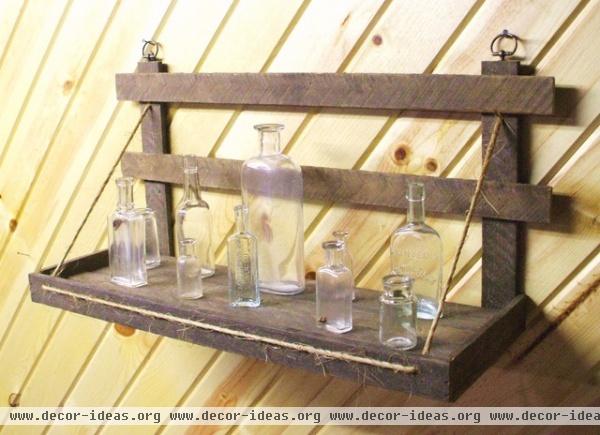
Rustic wooden wall shelf primitive handmade of reclaimed old wood - $39.95 » Honoring modest living and the moment, wabi-sabi finds beauty in imperfection and profundity in nature. Wabi-sabi is flea markets, not warehouse stores; aged wood, not Pergo; rice paper, not glass. Wabi-sabi things have history, like these bottles and this wood.
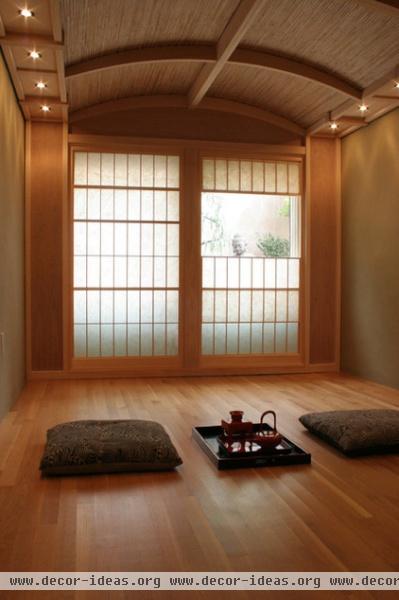
Wabi-sabi is the difference between what the Japanese call kirei, “merely pretty,” and omoshiroi, the interestingness that makes something beautiful. The window breaking this meditation room's symmetry and offering a glimpse of a garden beyond gives the room omoshiroi.
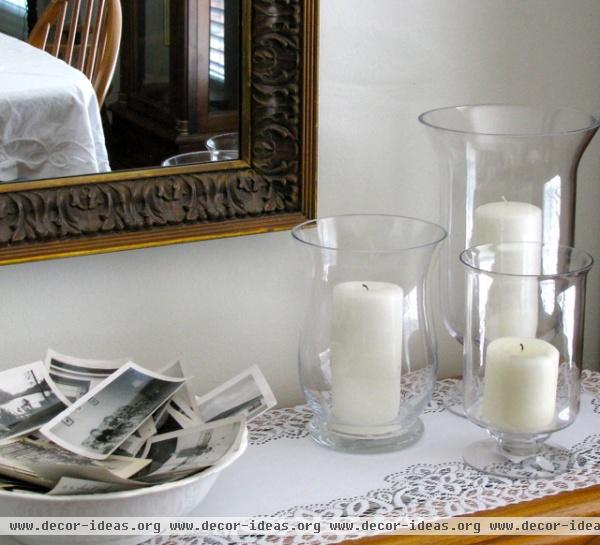
In a wabi-sabi home, possessions are pared down, and pared down again, to those that are necessary for their utility or beauty (ideally, both). What makes the cut? Useful things: the hand-crank eggbeaters from the flea market that work as well and with less hassle than electric ones. Things that resonate with the spirit of their makers’ hands and hearts: a handmade chair, a 6-year-old’s lumpy pottery, a lumpy sheep’s wool afghan, pieces of history. These sepia-toned ancestral photos and lace cloth are good examples.

Wabi-sabi borrows its hues from late autumn: soft slate grays and matte golds, with occasional spots of rust breaking the subtle spectrum. In the absence of spring and summer’s brilliant color palette — in autumn’s soft, low light — these colors allow the eye to relax. Like the stones in this house, wabi-sabi is sinewy, flecked browns and yellowed greens. Like nature, wabi-sabi paints in multidimensional swatches that are never what they appear to be. The stones, close up, are speckled with crystalline bits, ranging from deep and dark to almost white, with orange and red washed gracefully into the larger scheme of quiet, recessive color.
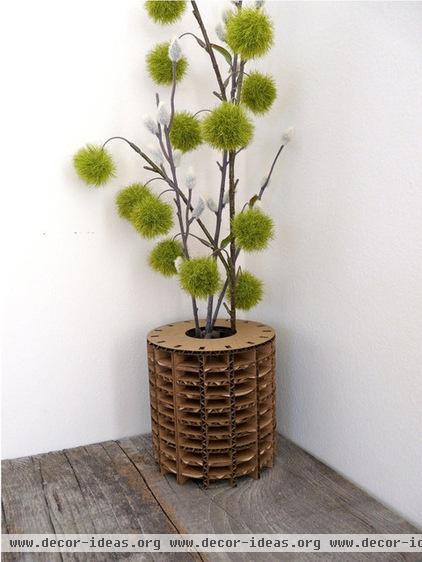
Cardboard Vase, Modern Design, Glass Vase Insert by Urban Analog » A simple step that will bring wabi-sabi into your home
Designate a prominent place that will hold a vase with something living — or once living — that you’ve gathered from within a mile of where you live. In spring, when the world is crawling with fresh blooms, and in fall, when colors are crisp and crackling, this is a cakewalk. It’s harder to be creative in summer, believe it or not; daylilies and daisies are so easy, and most of the trees and bushes sport monotonous green foliage. Winter offers the best wabi possibilities: dried grasses and seedpods and naked, sculptural twigs and branches.
Wabi-sabi flowers (chabana) aren’t arranged. They’re placed, in their most natural form, into unpretentious vessels in a simple, austere style called nagarie, which literally translates as “throw in.” This method requires no training or talent, but it does require humility, in admitting we can’t improve on nature, and a willingness to observe without judging or meddling.
Wabi flowers are always seasonal, arranged to look as they do in the fields. Each stem gets room to breathe; they’re never crowded into big, frothy mounds. Stems aren’t cut down to create uniformity; no frogs or wires are used. Branches are never forced, and tulips bending in their final days are as welcome as sprightly daffodils. Pick a few chicory stems from between the sidewalk’s cracks and let them settle into an old bottle. Work with single flowers and small, odd numbers. Or forget about flowers and use a solitary branch (bare in midwinter, budding in springtime) or a few tall grasses.
Trade in crystal vases for humble containers: baskets, bamboo slices, hollowed gourds, old jars, a well-shaped bottle that held dessert wine. (Pretty old wabi-sabi bottles — ranging in price from $1 in parts of West Texas to $15 in Northern California — are prolific at pawn shops and flea markets.)
Your turn: Please show us your wabi-sabi style in the Comments!












